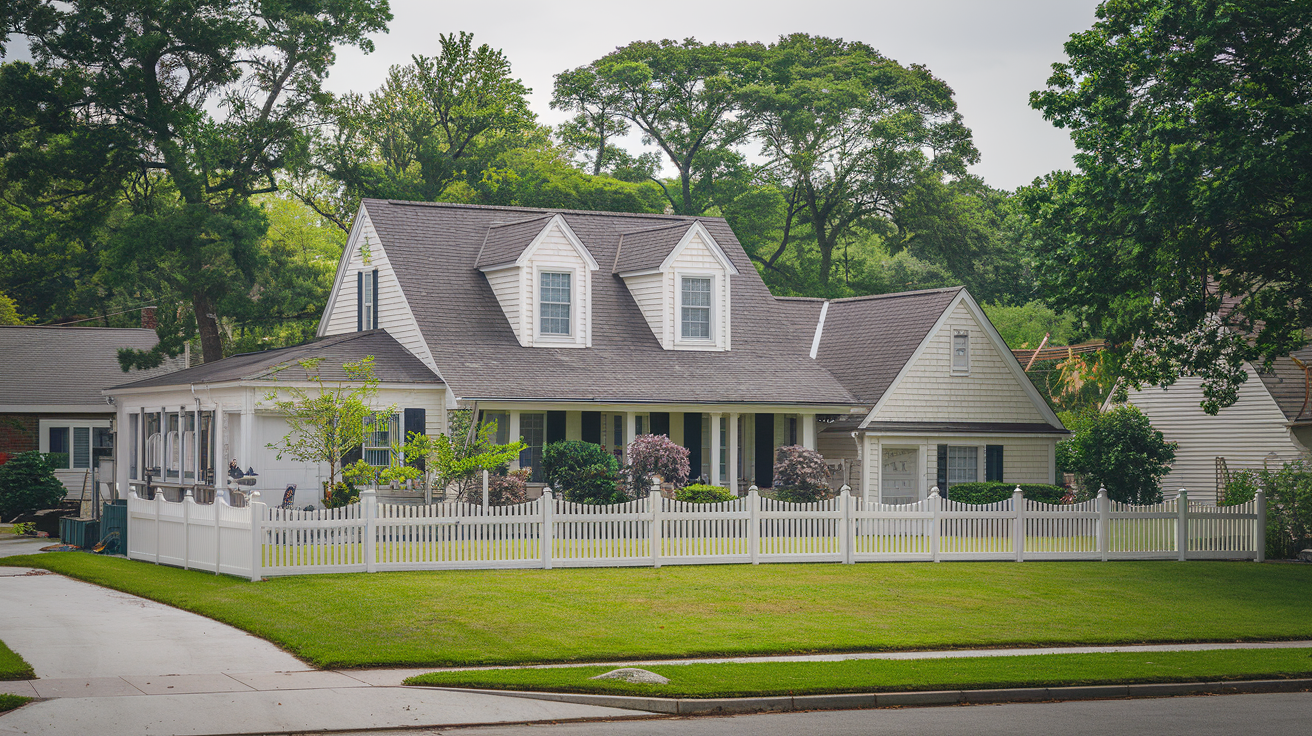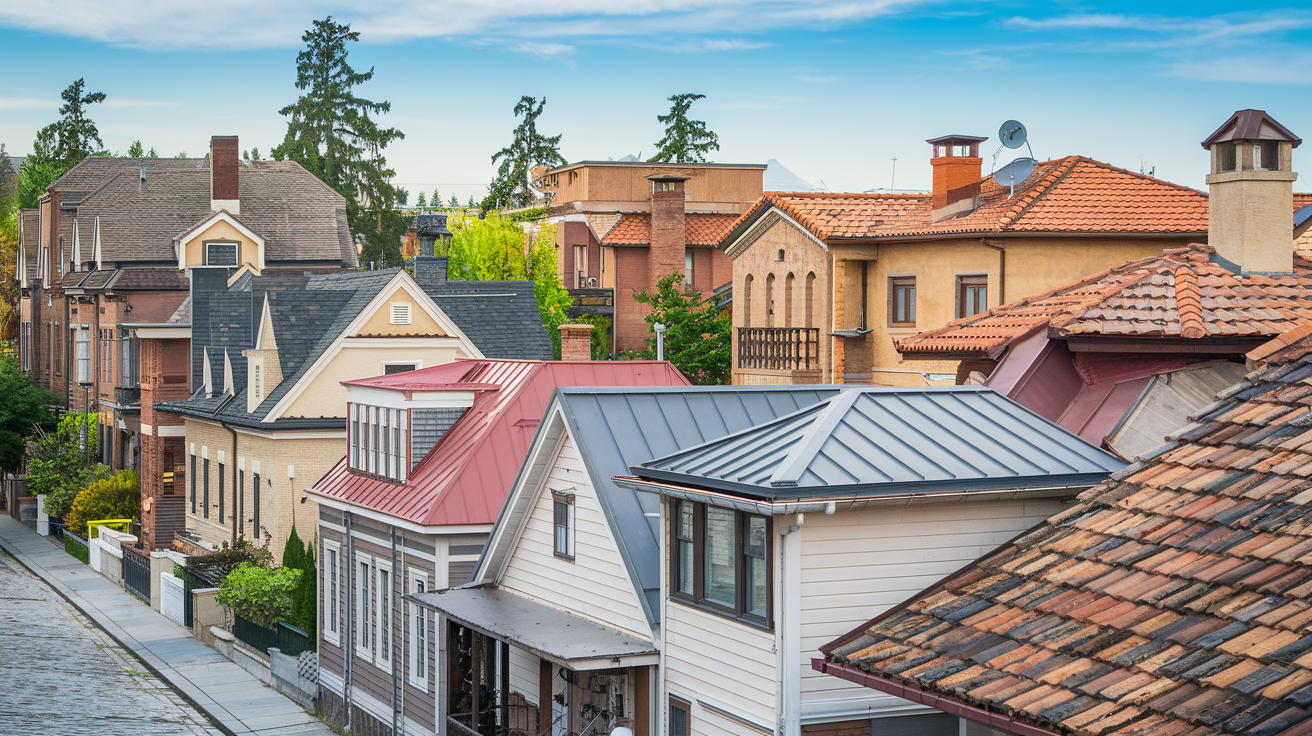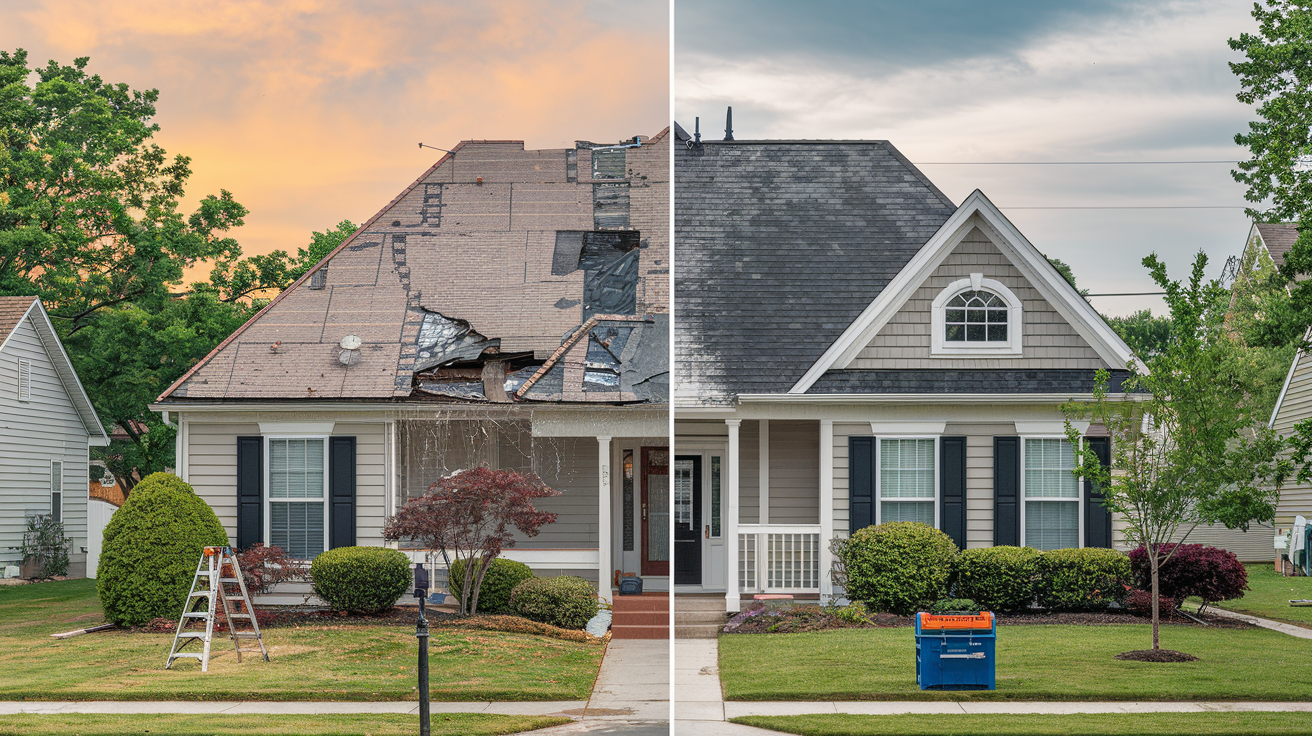Professional Roof Inspection Guide: Hidden Problems That Cost You Money
Did you know that over 19% of home inspections reveal significant roofing issues that homeowners never noticed? Your roof silently protects your home 24/7, but hidden damage could be developing right now - damage that could lead to costly repairs if left unchecked. While many homeowners believe a quick glance from the ground is sufficient, professional roof inspections reveal critical issues that untrained eyes often miss.
A professional roof inspection is more than just a casual lookover. Using advanced tools like infrared cameras and drones, certified inspectors can spot potential problems before they become expensive emergencies. From detecting hidden moisture damage to identifying structural weaknesses, these thorough assessments help protect your most valuable investment - your home.
In this comprehensive guide, you'll discover why professional roof inspections are essential, what inspectors actually look for, and how regular inspections can save you thousands in potential repair costs. We'll explore the latest inspection technologies, regional considerations for different climates, and practical tips for maintaining your roof's integrity for years to come.
- Importance of Professional Roof Inspections
- Key Benefits of Professional Roof Inspections
- Regional Considerations in Roof Inspections
- Common Roof Problems Identified by Inspectors
- Cost Implications and Long-Term Savings
Importance of Professional Roof Inspections
Your roof is a critical component of your home, safeguarding against weather elements and enhancing energy efficiency. Many homeowners overlook the significance of regular, professional roof inspections, which are crucial for identifying issues not visible from the ground. These inspections help address minor problems before they escalate into costly repairs. In fact, over 19% of home inspections reveal roof issues ranging from leaks and damaged shingles to serious structural concerns like rot or weak framing (source: Homeowners). Professional inspections help homeowners protect their roofs, extend their lifespan, and avoid unexpected expenses.

Understanding the Need for Regular Inspections
Regular roof inspections are vital for early damage detection, protecting your home, and maintaining energy efficiency. Roofs endure constant exposure to weather, resulting in gradual wear and tear. The frequency of inspections may vary based on the roof's age, material, and local climate. For instance, a ten-year-old roof may require an annual inspection, while a twenty-year-old roof might need one every six months. Older roofs necessitate more frequent checks due to prolonged exposure. Inspections often uncover leaks and damaged shingles, which can lead to severe issues if left unaddressed. A professional inspector provides a comprehensive roof assessment, ensuring your home's safety by checking for leaks, ventilation, and the condition of roofing materials. Consider scheduling a roof assessment to ensure your roof is in optimal condition. You can also learn more about roof maintenance for regular upkeep insights.
Common Misconceptions About DIY Inspections
Many homeowners believe they can adequately inspect their own roofs. While visible issues might be noticeable from the ground, subtle signs of damage often go unnoticed. Professional inspectors utilize specialized tools like infrared cameras to detect hidden moisture and temperature changes, which may indicate damage. For example, infrared cameras can reveal trapped moisture within the roof, invisible from the outside. Homeowners might miss critical areas, leading to severe problems over time. Key areas to monitor include curling shingles, damaged flashing, and clogged gutters, which can cause water backup and roof damage. While homeowners should remain vigilant for obvious issues, professional inspections are essential for thorough evaluations, helping avoid costly repairs. Roof inspections, which cost between $75 and $900, depending on the inspection type and roof size, are a wise investment compared to major repair expenses from neglected maintenance.
Key Benefits of Professional Roof Inspections
Roof inspections are crucial for maintaining a safe and structurally sound home. A professional roof inspection provides a comprehensive assessment beyond surface-level observations, identifying potential problems early on. This extends your roof's lifespan, enhances property value, and significantly improves home safety and energy efficiency. Understanding these benefits aids in making informed decisions about roof maintenance and potential upgrades.
Professional roof inspections excel at identifying hidden damage. Roofs are complex systems with vulnerabilities often unnoticed by untrained eyes. These hidden issues can include damaged flashing, structural weaknesses, or minor leaks that can escalate into significant problems over time. Professional inspectors utilize specialized tools and techniques, such as infrared technology, to pinpoint moisture and other issues invisible to the naked eye. Early detection allows you to address these problems before they require expensive repairs, saving you time and money. For example, a small leak caught early might cost a few hundred dollars to fix, whereas ignoring it could lead to extensive water damage requiring thousands of dollars in repairs. Schedule your roof assessment today to identify hidden issues.
Extending Roof Lifespan and Enhancing Home Value
Regular professional roof inspections are key to extending your roof's lifespan. By identifying and addressing minor problems like cracked or curling shingles, you prevent premature aging and deterioration. A well-maintained roof is a major selling point, demonstrating to potential buyers that the property is well-cared for and less likely to require immediate repairs. This proactive maintenance preserves your roof's structure and boosts your home's overall value. Homes with well-maintained roofs tend to have higher market value, making inspections a smart investment, especially if you plan to sell. To learn more about roof maintenance, explore our comprehensive guide.
Improving Home Safety and Energy Efficiency
Professional roof inspections not only protect your investment but also enhance home safety and energy efficiency. Inspectors identify safety hazards like sagging rooflines or damaged decking, which can pose serious risks. Ignoring such problems could lead to structural failure, endangering those inside. Inspectors also evaluate ventilation systems, crucial for regulating indoor temperatures and reducing energy use. Proper ventilation maintains a comfortable living space and lowers utility bills, making roof inspections vital for an energy-efficient home. By ensuring your roof is in top condition, you create a safer, more sustainable home.
Regional Considerations in Roof Inspections
Understanding regional differences is crucial for timely and comprehensive roof inspections. Different regions face unique challenges, from climate variations to material preferences, impacting inspection needs. Tailoring inspections to regional specifics allows homeowners to optimize maintenance and protect their investment. Factors like roof age, material type, and seasonal changes influence inspection scheduling. For example, newer roofs might require inspection every two years, while seasonal changes often indicate the need for inspection. Let's explore how climate and material selection impact roof inspections across various regions.
Climate Impact on Inspection Frequency and Focus
Climate significantly influences inspection frequency and focus. Regions with harsh winters require more frequent inspections for ice dams and snow damage, as the freeze-thaw cycle stresses roofing materials, potentially causing leaks. Conversely, areas with high winds and hurricanes need inspections focusing on wind damage and loose shingles. A professional roof inspection costs between $75 and $900, depending on factors like roof size and inspection type, preventing more expensive repairs by identifying problems early. Get Your Roof Assessment to determine specific needs based on your location.
- Cold Climates: Inspect for ice dams and shingle damage after winter. Even without visible damage, check for potential weaknesses like small cracks or loosened sealant around flashing.
- Warm Climates: Focus on sun exposure and potential UV damage, as UV rays degrade roofing materials, making them brittle and susceptible to cracking and fading.
- Wind-Prone Areas: Prioritize checking for loose or missing shingles, especially after severe weather events.
Understanding regional climate impacts helps homeowners protect their roofs from specific weather-related damage. Inspections often uncover critical issues like leaks, damaged shingles, and poor ventilation, preventing further damage and extending roof lifespan. Learn more about roof maintenance for tips on protecting your roof from weather damage.

Material Selection and Regional Best Practices
Roofing material choice is critical to regional inspection practices. Asphalt shingles are common due to affordability and durability. However, humid areas may prefer mold and mildew-resistant materials like metal roofing, known for longevity and moisture resistance. Clay tiles, common in hot, dry areas, withstand heat and reflect sunlight, keeping homes cooler. Over 19% of home inspections reveal roofing issues, highlighting the importance of professional assessments.
- Asphalt Shingles: Suitable for various climates but requires regular checks for granule loss.
- Metal Roofing: Ideal for humid regions; inspect for rust or corrosion.
- Clay Tiles: Perfect for hot, dry areas; ensure tiles remain intact.
Aligning material choice with regional best practices ensures roofs are functional and long-lasting. Proper material selection and tailored inspections extend roof life. A roof inspection report provides valuable information for informed decisions about repairs and replacements.
Common Roof Problems Identified by Inspectors
Roof inspections are crucial for maintaining your home's protection, often revealing hidden problems that could become major headaches if unchecked. This section explores common issues found by professional roof inspectors, explaining their causes and solutions. A professional roof inspection provides peace of mind and helps avoid costly repairs. Consider scheduling a roof assessment to identify potential problems early.
Shingle Damage and Repair Solutions
Shingle damage is a frequent finding during roof inspections. Missing, cracked, or curled shingles weaken your roof's defense against the elements. Several factors contribute to shingle damage, including severe weather, age, and improper installation. Wind and hail damage contribute to over 39% of residential losses, often affecting the roof.
Repairing Shingle Damage
Repairing shingle damage usually involves replacing damaged shingles, sealing leaks, and applying protective coatings. Addressing these issues quickly prevents bigger problems like water damage and costly repairs. The average cost for mid-range repairs typically falls between $650 and $850. To learn more, learn more about roof maintenance.
Flashing and Ventilation Issues
Inspectors often find problems with flashing and ventilation. Flashing seals roof joints to prevent water infiltration and can become damaged or corroded over time.
Common Flashing Problem Areas
Common problem areas include chimneys, skylights, and valleys where roof sections meet. Damaged flashing can cause leaks, contributing to about one-third of roof-related insurance claims. Unrepaired flashing problems can lead to structural damage.
The Importance of Proper Ventilation
Proper ventilation is key for regulating temperature and moisture in the attic. Poor ventilation causes heat buildup, damaging shingles and increasing energy bills. Solutions include repairing or replacing damaged flashing and improving attic ventilation with vents or fans.
Recognizing Structural Concerns
Inspectors also look for structural problems, like sagging or uneven rooflines, which can signal underlying issues such as water damage, improper installation, or structural weakening. Catching these early prevents serious damage to your home's foundation and support systems.
Professional Inspection Tools
Professional inspectors use visual assessments and technology, like infrared cameras, to accurately detect structural issues. While homeowners can sometimes spot these problems, professionals have the training and equipment for thorough evaluations. Fixing structural problems might involve reinforcing the roof, repairing the roof deck, or, in severe cases, a full roof replacement. Taking proactive steps protects your home and extends your roof's life.
Cost Implications and Long-Term Savings
Understanding the cost implications of roof inspections is crucial for effective home maintenance. Professional roof inspections protect against unexpected expenses and offer significant long-term savings. By investing in regular inspections, homeowners can avoid costly repairs and extend the life of their roofs. This section explores typical inspection costs, compares repair versus replacement expenses, and highlights how regular inspections prevent expensive repairs.
Typical Costs of Professional Roof Inspections
Roof inspection costs vary based on factors like roof size, complexity, and inspection type. A simple visual inspection typically costs between $100 and $400.
Visual Inspections
A visual inspection involves a roofer examining your roof for visible damage, including missing or damaged shingles and cracked flashing. On average, a roof inspection costs between $75 and $900, with standard visual inspections on the lower end of this range.
Advanced Inspection Methods
Advanced methods like infrared or drone inspections cost more but can identify hidden problems.
Infrared Technology
Infrared cameras detect temperature differences, revealing potential issues like water leaks or insulation problems invisible to the naked eye.
Drone Inspections
Drone inspections provide a comprehensive roof view without physical climbing, useful for large or complex roofs. Get Your Roof Assessment. Despite the cost, professional inspections are a worthwhile investment, offering valuable insights into your roof's condition and preventing bigger, more expensive problems later.
Comparing Repair vs. Replacement Costs
Deciding between roof repair or replacement can be challenging. Understanding the costs involved simplifies this decision. The average cost of roof repairs ranges from $650 to $850, while a full roof replacement costs around $9,000, potentially over ten times the cost of an average repair.

The Value of Early Repairs
Promptly repairing minor issues prevents escalation into major problems requiring full replacement. For example, replacing a few damaged shingles is relatively inexpensive, whereas widespread storm damage could necessitate a full replacement. The repair cost depends on the damage extent and materials needed. A professional assessment provides an accurate estimate. Learn more about roof maintenance. By addressing repairs early, homeowners save thousands of dollars and extend their roof's lifespan. Delaying repairs leads to more extensive damage and higher overall costs. Replacement might be more cost-effective if your roof is nearing its lifespan or has significant damage.
Avoiding Costly Repairs Through Regular Inspections
Regular roof inspections are a proactive way to avoid costly repairs. Identifying potential issues early allows homeowners to address them before they worsen. Regular inspections are like doctor checkups, with early problem detection simplifying treatment and reducing expenses.
Benefits of Regular Inspections
Inspections uncover common problems like leaks, damaged shingles, and clogged gutters, cheaper to fix than major repairs. Addressing a minor leak quickly prevents costly water damage to ceilings and walls.
Recommended Inspection Frequency
A general guideline is at least one annual roof inspection. Insurance companies often require regular inspections for coverage, reducing major claim risks. Even new roofs benefit from inspections, although less frequently. Scheduling at least annual inspections keeps roofs in optimal condition, avoiding the financial burden of unexpected repairs. Some experts recommend twice-yearly inspections, especially in harsh weather areas. Inspection frequency also depends on roof age and material, with older roofs or those made with less durable materials potentially needing more frequent checks. For example, a ten-year-old roof might need an annual inspection, while a twenty-year-old roof might benefit from a check every six months.
Disclaimer: This blog post is intended for informational purposes only and should not be considered professional roofing advice. Always consult with qualified roofing contractors and insurance professionals for specific guidance regarding your individual circumstances.
